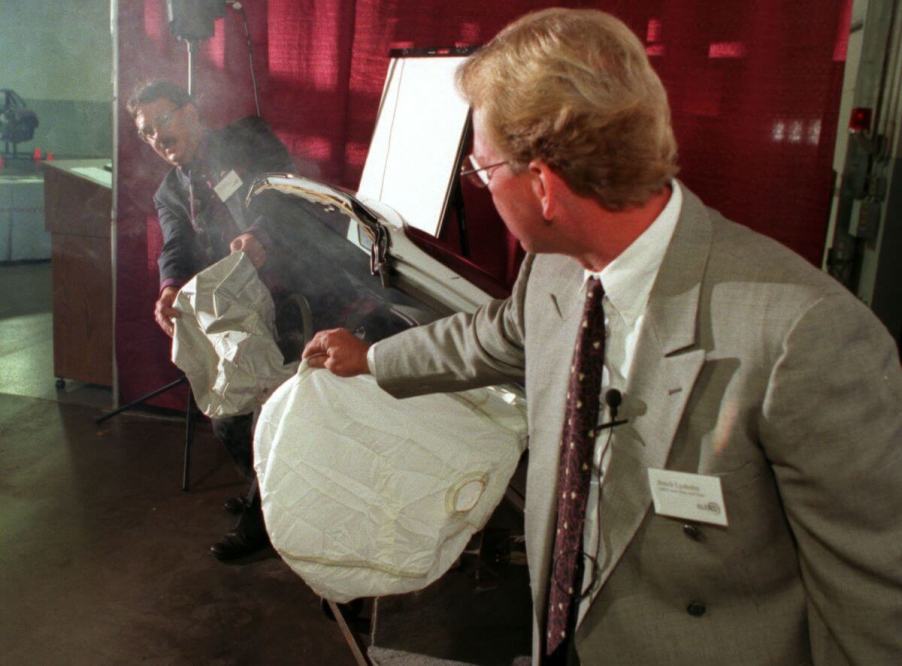
Are Airbags Safe for People With Glasses?
Airbags have been one of the most crucial car safety innovations in recent decades. They provide cushioning for vehicle occupants during car accidents by reducing the chances of upper body or head injuries when they strike the interior of a car during an accident.
However, even though airbags are designed to protect parts of the body from injury, they may still cause airbag-related injuries. That’s why vehicles have seat belts to restrain the body from these injuries. Here’s more on how airbags keep people safe and their potential risks.
How do airbags keep people safe?
According to the NHTSA, airbags keep people safe by reducing the chances of the upper body or head hitting the interior of a car during a crash. The vehicle’s detectors send a signal to the airbag system to fill it with gas in a moderate to severe crash. The inflator has an ignitor that starts a chemical reaction to produce a harmless gas, inflating the airbag immediately.
This reaction occurs on the frontal and side airbags. The frontal airbags prevent drivers and passengers at the front from injuries, while the side airbags protect the occupants from side impact.
Please note that airbags are not entirely safe for vehicle occupants. For instance, sitting too close to the frontal airbag’s deployment area can result in airbag-related injuries. That’s why drivers and passengers should sit further from the steering wheel or dashboard and use their seatbelts while on board. Children below 13 years should also be seated in the back seats to protect them from these injuries.
Are airbags safe for vehicle occupants with glasses?
As aforementioned, airbags are not fully guaranteed to prevent fatalities or injuries in case of an accident. They can cause injuries, especially for people with glasses, if they sit too close to their deployment area. They can also be dangerous if they’re defective.
There are three general airbag defects; failure to deploy, deploying too aggressively, and deploying at the wrong time. They can also be hazardous if all airbags don’t deploy during an accident. This may cause vision loss, hearing damage, facial fractures, chemical scars and burns, and neck and back injuries.
How defective airbags have injured and killed vehicle occupants over time

There have been cases of injuries or death related to defective airbags. For instance, 11 million Takata Airbags were reported to have caused deadly tumors, resulting in their recall. Consumer Reports indicates that over 19 automakers or 34 brands were recalled to replace frontal airbags on the driver and passenger sides. This was one of the biggest vehicle recalls in the U.S.
The recall was based on a defective metal cartridge loaded with propellant wafers that would ignite and explode with force and shoot sharp metallic fragments at the drivers and passengers. It affected cars from model years 2002 to 2015, with a total of 67 million airbags recalled by the end of 2022, with 11 million yet to be replaced.
NHTSA determined that the problem arose from the ammonium-nitrate-based propellant used in manufacturing the Takata Airbags. These airbags had no drying agent and would be improperly inflated due to high temperature, environmental moisture, and aging. There have been 24 deaths and more than 400 injuries associated with these airbags in the U.S. to date.
Besides the Takata Recall, other recalls have been associated with defective airbags. For instance, Fiat-Chrysler recalled 1.3 million vehicles in 2017 due to faulty wiring. These vehicles had improper wiring that would cause random deployment.
Mazda also recalled 60,000 vehicles due to short-circuiting their airbag’s wiring, preventing the airbag from deploying when expected during an accident.



